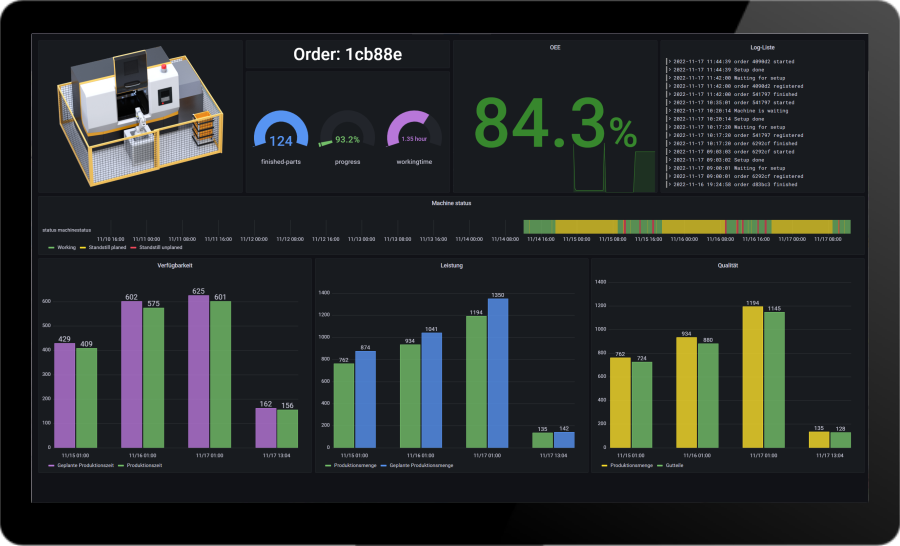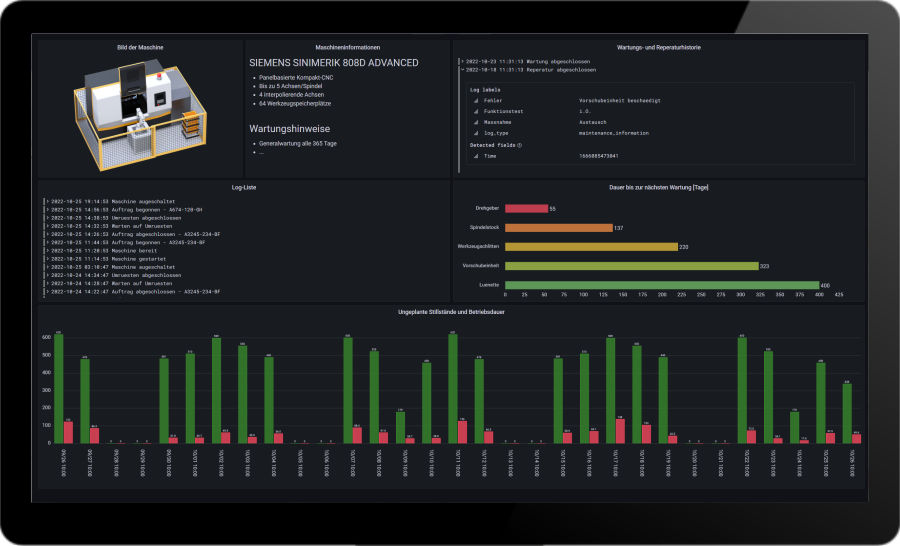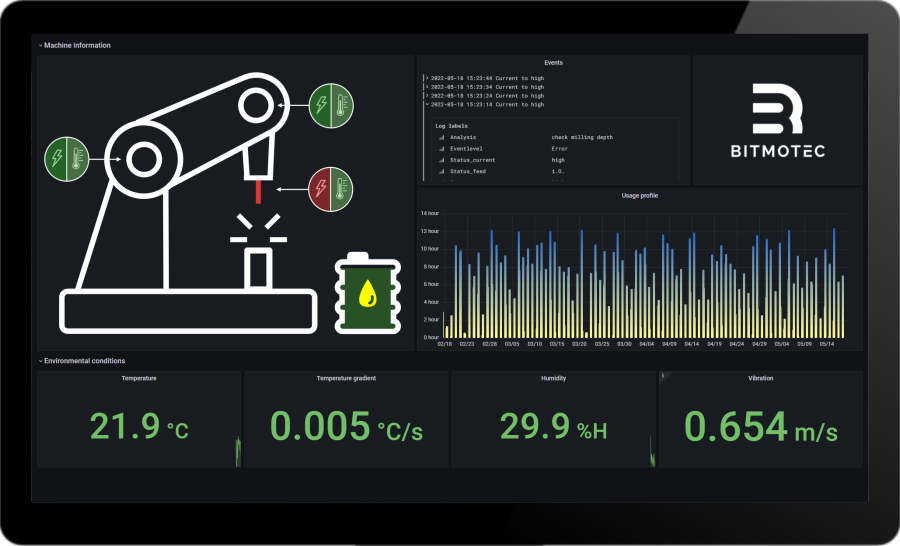Condition Monitoring in Mechanical Engineering
Condition monitoring is a method used in mechanical engineering to monitor the condition of machines and systems. It thus enables a preventive maintenance strategy based on the continuous monitoring of machine parameters. As a result, companies can identify potential problems early and take appropriate action.
The Importance of Condition Monitoring in Mechanical Engineering
The importance of condition monitoring in mechanical engineering cannot be underestimated. Avoid machine failures and reduce downtimes by using condition monitoring. This leads to higher machine availability and increased productivity. In addition, you can detect potential damage at an early stage, before expensive repairs or even a total failure occurs.
In mechanical engineering, it is often difficult to monitor the condition of machinery and equipment, as they are usually operated in harsh environments and exposed to various stresses. However, condition monitoring makes it possible to continuously check the condition of the machines and detect potential problems at an early stage.
There are various methods of condition monitoring, such as vibration analysis, temperature monitoring or monitoring of the oil condition. In vibration analysis, the vibrations of the machine are measured and evaluated. Increased vibration indicates, for example, an imbalance or bearing damage. Temperature monitoring is another method of condition monitoring that involves monitoring the temperature of the machine. For example, an increased temperature indicates a possible problem with lubrication. When monitoring the condition of the oil, the oil is regularly inspected for contaminants and wear particles.
Advantages
There are many advantages of condition monitoring in mechanical engineering. For example, by using condition monitoring, you can detect potential problems at an early stage before a machine breakdown occurs. As a result, this reduces downtimes and increases machine availability. Increased machine availability, in turn, leads to higher productivity and higher utilization of the machines.
In addition, condition monitoring also optimises the maintenance of the machines when used correctly. Instead of maintaining the machines on a regular basis, regardless of whether it is actually necessary or not, maintenance can be planned based on the actual needs of the machine. This saves time and money and ultimately reduces wear and tear on the machines.
In addition, as a machine and plant manufacturer, you can expand your after-sales services with a condition monitoring system and introduce new business models based on this. This creates additional or completely new business potential.


Introduction of Condition Monitoring in Mechanical Engineering
The introduction of condition monitoring in mechanical engineering is an important measure to increase the productivity and efficiency of machines and systems. This is a preventive maintenance strategy. This makes it possible to identify potential problems at an early stage and take appropriate measures. In the following, we show the steps to introduce condition monitoring in mechanical engineering.
Step 1: Analysis of the machines
The first step is to carry out a comprehensive analysis of the machines. Various aspects such as machine type, area of application, load and maintenance requirements should be taken into account. Based on this analysis, you select the most suitable condition monitoring methods (e.g. vibration analysis).
Step 2: Selection of suitable measurement methods
Based on the analysis of the machines, you select the appropriate condition monitoring measurement methods. These measurement methods include, for example, vibration analysis, temperature monitoring or oil condition monitoring. The choice of suitable methods basically depends on the specific requirements and the area of application of the machines.
Step 3: Installation of sensors and data acquisition
In order for condition monitoring to be carried out, sensors for data acquisition must be installed on the machines. These sensors can be, for example, accelerometers, temperature sensors, or oil condition sensors. In some cases, sensors already exist in the machines or the built-in control system can provide information about the machine statuses. The collected data is then forwarded to a monitoring system, where it is then analyzed and evaluated.
Step 4: Implementation of monitoring systems
The implementation of monitoring systems is an important step in the introduction of condition monitoring in mechanical engineering. For example, these systems detect anomalies or deviations in machine parameters based on machine learning methods or artificial intelligence. Monitoring systems should be configured to generate alerts when potential problems are detected.
Step 5: Employee training
In order to be able to carry out condition monitoring effectively, it is important that employees have the necessary skills and knowledge. The training of employees includes, for example, the topics of data analysis, maintenance of the sensors and interpretation of the data.
Step 6: Establish Maintenance Schedules
Create your maintenance plans based on the data you collect. These plans specify the necessary maintenance measures and the timing of the implementation of these measures. This reduces maintenance costs and extends the service life of the machines.
Step 7: Continuous Improvement
Don’t think of the introduction of condition monitoring as a one-time measure. Rather, it is a process of continuous improvement (CIP). Check and analyze the collected data accordingly regularly to identify weaknesses and optimization potential. In this way, the effectiveness of the condition monitoring system is continuously improved. After all, this ensures that the machines and systems remain in optimal condition and that downtime is minimized.

